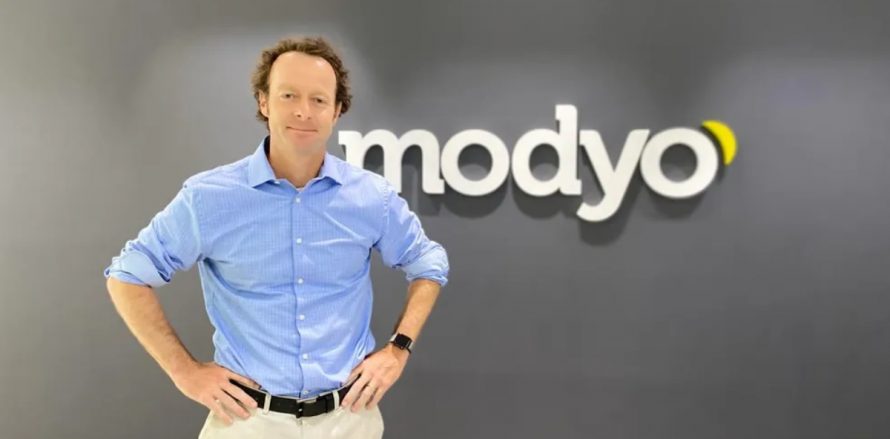The financial world is expanding. As technology and innovation continue to empower how customers can transact and engage with their preferred institutions, global organizations are now looking to that same technology to leverage how they conduct business across their digital channels.
Changes aimed at easy access, transparency, convenience, and experiences are giving more autonomy and choice to customers.
Now, financial leadership finds itself in a position to make major decisions that will affect the long-term outcome of their digital strategies.
With an overwhelming number of technology options and implementations, coupled with an increase in customer demand for better experiences, leaders are investing in technology in order to navigate paths that will ultimately give their organizations the tools necessary to respond to current and future challenges.


Looking at a landscape that holds so much in the balance, companies like Modyo are paving the way for financial institutions to take control of their own innovation, by offering a platform that accelerates and unifies how they build and manage digital products.
Modyo recently announced participation in the 7th America Digital Latin American Congress of Business & Technology 2022, as sponsors for the C-Level Digital Banking & FinTech Forum.
Their stated goal is to connect with and educate senior-level leadership and innovators regarding how the Modyo platform’s bespoke architecture designed with large, transaction-based organizations in mind, can radically accelerate how they build digital products, manage their digital channels and future-proof their financial experiences.


Mark Bonnell, Modyo’s CEO, is set to speak at the Digital Banking & FinTech Forum to expand on the importance of future-proofing financial experiences through better technology.
With a unified front end platform, organizations can realize a vision where both technical and non-technical teams within next-generation digital factories can build, manage, and deploy every aspect of a site, application, or digital product, with better oversight, security, and productivity through tools built upon a composable, micro frontend architecture.
Starting with a platform design principle that deals with the interaction of components, Modyo provides an integration-friendly, framework-agnostic ecosystem where numerous financial institutions today are deploying, updating, and iterating their digital channels at an accelerated rate.
This speed creates room for options which lead to better testing and decisions that help organizations evolve their channels and products.
With companies able to iterate more quickly, their responses to customer demand have become proactive, leading to better experiences and customer loyalty.
The ability to accelerate, evolve, and work within a robust digital ecosystem all have a transformative effect on financial institutions and the digital products that they serve to their customers.
These three concepts, in effect, act as pillars for how financial leadership and innovators should frame their thinking when making long-term decisions.
- Acceleration
When selecting front end technology, decision makers need to weigh numerous aspects of how they’re able to accelerate building and iterating.
They need to consider how quickly a traditional front end platform will generate a return on value. Then consider how quickly a single-tenant SaaS solution can provide the same or greater value.
Clarity, auditability, and compliance are important attributes when weighing how a platform reference architecture functions, as well as how business system integrations occur within critical digital channels.
If building particular use cases or solutions, a good front end platform should provide ready-to-go experiences to serve as base and example of best practices.
- Evolution
The ability to evolve goes beyond just the ability to iterate quickly, or have real clarity and compliance.
Evolution means being able to pivot at any given moment to adapt digital channels and products to meet customer needs.
This means empowering technical teams to build digital experiences using numerous, flexible standard technologies and frameworks (e.g. Bootstrap, Liquid, JS frameworks such as Vue.js, Angular.js, and React.js) that enable your organization to adapt.
As well, non-technical teams should be able to easily and independently manage content and key digital assets with systems in place that buffer your channels against risk.
Further, front end platforms should anticipate and serve strategies that leverage next-generation solutions such as mobile Progressive Web Applications (PWA’s) or appshells.
- Ecosystem
Encompassing a front end platform’s ability to empower a financial institution’s ability to accelerate and evolve, a true ecosystem within the platform provides the tools and integrations necessary to create digital factories that are best suited for the challenges and business goals of the organization.
Realizing business value through integrated micro services, enabling robust user identity and management solutions, and providing multiple development methods through modern development pipelines (such as with repositories, a CLI, enabled developer-preferred IDEs) are a few attributes to look for in a true front end ecosystem.


Platform flexibility leads to productivity, shortens development cycles, and improves the quality of digital products, which ultimately creates better digital experiences for customers.
Don’t miss Mark Bonell’s conference at 7th America Digital Latin American Congress 2022. Buy your tickets here
 Contact
Contact 

